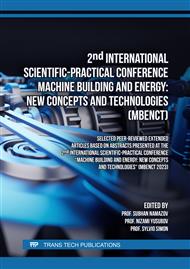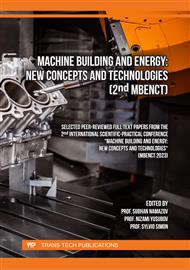p.3
p.11
p.19
p.29
p.37
p.45
p.51
p.61
p.69
Modeling of Main Gas Pipelines at Change of Pressure at the Beginning and Speed of Movement at the End of Pipe
Abstract:
The article analyzed non-stationary processes in gas transmission systems and their emergency modes. A simplified numerical method was applied based on the theory of impulse systems for calculating unsteady processes in complex systems of main gas pipelines. The quality of the mathematical apparatus used the discrete Laplace transform. Recurrence ratios were obtained that contribute to a significant increase in the accuracy of calculations of pressure and speed changes at any point of the main gas pipeline at any time and are easily implemented on a computer.
Info:
Periodical:
Pages:
37-44
Citation:
Online since:
April 2024
Authors:
Price:
Сopyright:
© 2024 Trans Tech Publications Ltd. All Rights Reserved
Share:
Citation:



